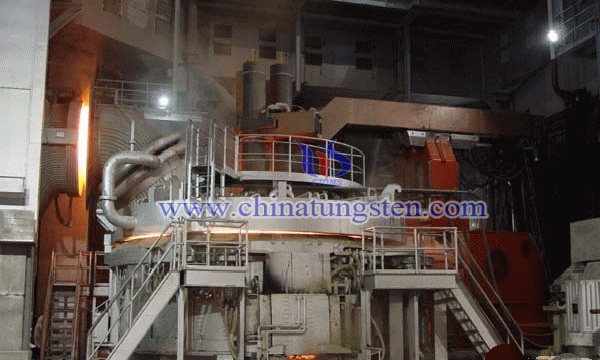Optimization of Waste Tungsten by Sodium Nitrate Smelting Method
- Details
- Category: Tungsten Information
- Published on Monday, 05 February 2018 15:22
Tungsten is a non-renewable strategic resource. With the rapid economic development, the demand for cemented carbide, especially tungsten metal materials in machinery manufacturing, geological mining, construction, electronics, military and chemical industries is increasing. Secondary recovery also becomes important.

At present, the main methods of reusing waste carbide include mechanical crushing, direct electrolysis, smelting, cold flow, leaching and other methods. At present, the most popular method for recovering waste tungsten is sodium nitrate melting method, metal elements can choose to be recovered, but in the smelting leaching process, chromium after high temperature melting leaching hexavalent chromium into the sodium tungstate solution, resulting in sodium tungstate solution of chromium exceeded, can not meet the high pure tungsten product production.
At present, the way of removing chromium basically adopts the method of passing sulfur dioxide and sulfite to reduce hexavalent chromium into trivalent chromium, but it will cause the increase of sulfate. In order to find out the ideal chromium which is the impurity element in sodium tungstate solution, some scholars have proposed a simple operation, large capacity, simple process, the rate of high chromium, low cost of chromium removal method.
After the waste tungsten is leached by saltpeter to obtain an alkaline sodium tungstate solution, the WO3 concentration in the sodium tungstate solution is 100-300g / L, the alkali concentration is 5-50g / L and the chromium concentration is 10-5000mg / L. Under alkaline conditions, the sodium tungstate solution is kept at a temperature of 60 to 90 DEG C, an appropriate amount of precipitating agent is added according to the proportion of 10m3: 10-50kg, and the precipitating agent is potassium hydrogen sulphide, precipitant is a salt of potassium hydrogen sulfide, sodium hydrogen sulfide, and ammonium hydrogen sulfide, which has the effect of reduction and precipitation. And then under the conditions of mixing heat precipitation reaction, the precipitation reaction preheating temperature is controlled at 60 ~ 90 ℃, the reaction temperature is controlled at 60 ~ 90 ℃, the reaction process to ensure sodium tungstate solution pH> 8.0, stirring insulation 2 ~ 10 Hour, and finally filtered to remove chromium precipitate generated by the reaction to obtain a qualified (chromium concentration less than 10mg / l) high purity sodium tungstate solution.
The sodium tungstate solution into a volume of 10m3 reaction vessel was heated to 80 °C, and then added 30kg NaHS, heating and stirring reaction, the reaction temperature was controlled at 80 °C, the reaction was controlled at pH 9.5, incubated for 4 hours with stirring after the chromium filter cake was filtered off, the high-purity sodium tungstate solution was obtained. The WO3 concentration of the sodium tungstate solution was 152 g / L, the alkali concentration was 16.2 g / L, and the chromium concentration was 0.
Through the optimization of the sodium nitrate smelting method, the secondary recovery of tungsten not only improves the chromium removal rate, meets the requirements of high quality tungsten products, but also reduces the pollution to the environment and is suitable for industrialized production.
- Tungsten Manufacturer & Supplier, Chinatungsten Online: www.chinatungsten.com
- Tungsten News & Prices of China Tungsten Industry Association: www.ctia.com.cn
- Molybdenum News & Price: news.molybdenum.com.cn
- Tel.: 86 592 5129696; Fax: 86 592 5129797; Email: sales@chinatungsten.com



 sales@chinatungsten.com
sales@chinatungsten.com